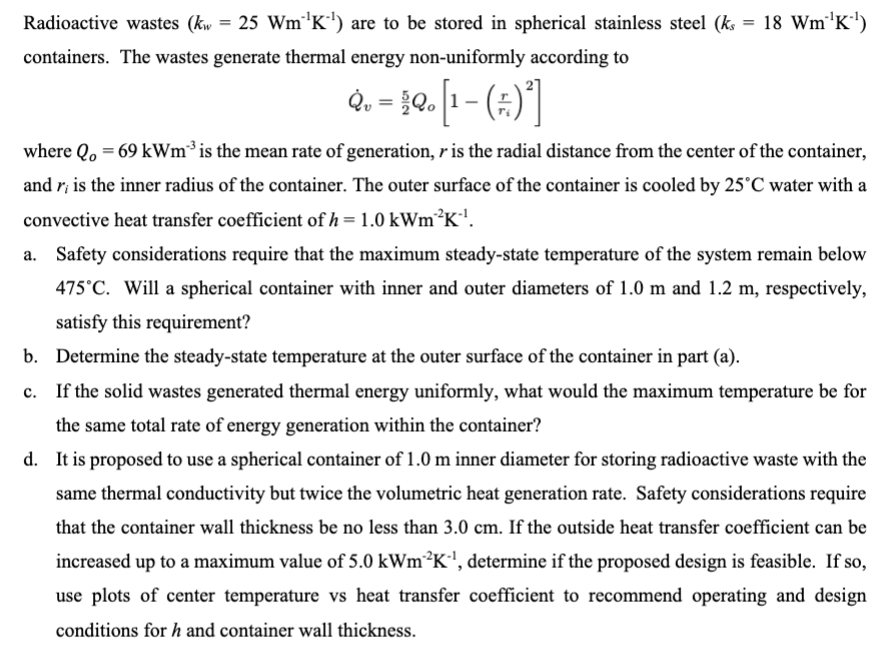Answered step by step
Verified Expert Solution
Question
1 Approved Answer
Radioactive wastes (k = 25 WmK) are to be stored in spherical stainless steel (ks = 18 Wm 'K) containers. The wastes generate thermal

Radioactive wastes (k = 25 WmK) are to be stored in spherical stainless steel (ks = 18 Wm 'K) containers. The wastes generate thermal energy non-uniformly according to Q.-19. [1-(4)] = where Q = 69 kWm is the mean rate of generation, r is the radial distance from the center of the container, and r, is the inner radius of the container. The outer surface of the container is cooled by 25C water with a convective heat transfer coefficient of h = 1.0 kWmK. a. Safety considerations require that the maximum steady-state temperature of the system remain below 475C. Will a spherical container with inner and outer diameters of 1.0 m and 1.2 m, respectively, satisfy this requirement? b. Determine the steady-state temperature at the outer surface of the container in part (a). c. If the solid wastes generated thermal energy uniformly, what would the maximum temperature be for the same total rate of energy generation within the container? d. It is proposed to use a spherical container of 1.0 m inner diameter for storing radioactive waste with the same thermal conductivity but twice the volumetric heat generation rate. Safety considerations require that the container wall thickness be no less than 3.0 cm. If the outside heat transfer coefficient can be increased up to a maximum value of 5.0 kWmK, determine if the proposed design is feasible. If so, use plots of center temperature vs heat transfer coefficient to recommend operating and design conditions for h and container wall thickness.
Step by Step Solution
There are 3 Steps involved in it
Step: 1

Get Instant Access to Expert-Tailored Solutions
See step-by-step solutions with expert insights and AI powered tools for academic success
Step: 2

Step: 3

Ace Your Homework with AI
Get the answers you need in no time with our AI-driven, step-by-step assistance
Get Started


